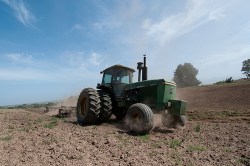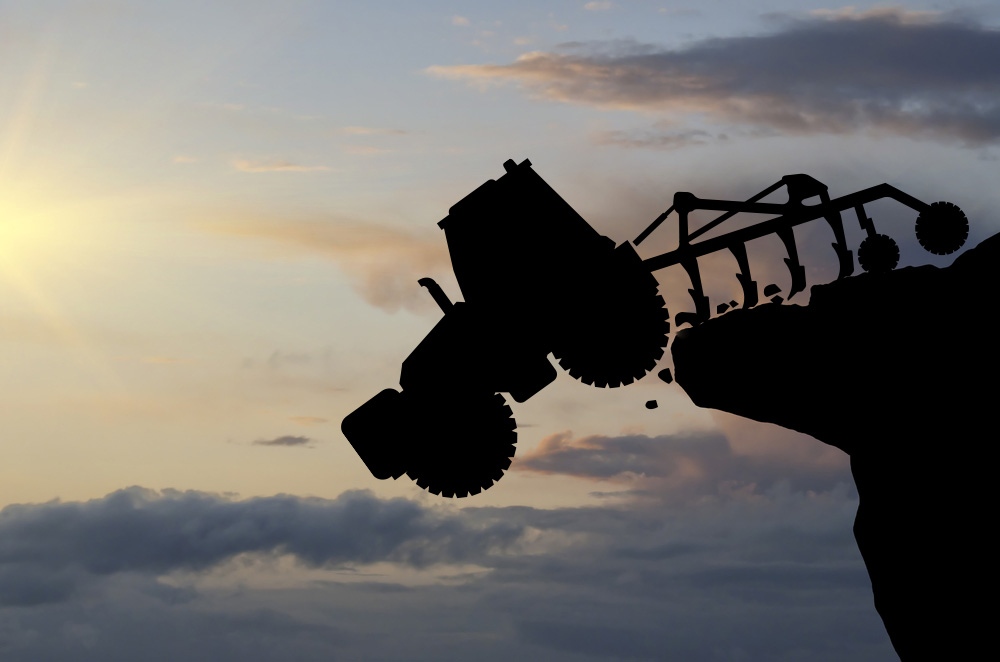
U.S. Department of AgricultureLand that is currently being farmed doesn’t capture carbon in the soil.
As a possible 2012 Farm Bill looms, the ag committee leaders and their industrial agriculture lobby remoras are sorting through the smoking ruins of the 2011 “Secret Farm Bill” process. They hope to come up with a unified position from which to begin deliberations on a new bill. Sadly, one thing they’ve all agreed to cut is 7 million acres from the Conservation Reserve Program (CRP). The CRP is administered through the U.S. Department of Agriculture and pays farmers to keep highly erodible land out of production.
While many recognize that putting land into conservation programs leads to cleaner water, healthier soil, and robust wildlife habitat, few realize that CRP land also plays a major role in fighting climate change. According to the USDA [PDF], one acre of protected land sequesters 1.66 metric tons of carbon every year, carbon that would otherwise end up in the atmosphere. The 7 million acres about to be cut from the CRP have been putting 11.6 million metric tons of carbon into the soil every year.
The Environmental Protection Agency says that this amount of carbon is equivalent to the annual emissions of 2 million passenger vehicles. All that stored carbon will be sent back into the atmosphere if those 7 million acres are plowed under to plant more industrial-scale corn for ethanol and livestock feed.
A recent poll [PDF] conducted by Iowa State University Extension and Outreach found that 68 percent of Iowa farmers surveyed say climate change is occurring; many of those same farmers likely experienced the devastating weather events of the past few years. So you’d think that there would be a clarion call from agriculture to have the federal government do whatever it takes to protect farmers against the ravages of climate change. Instead, taxpayers have to pick up the rapidly increasing insurance tab after climate-related disaster strikes.
And had industrial agriculture lobbyists not helped scuttle climate change legislation, farmers would be collecting payments today via carbon credits for their conservation practices.
The main impetus for cutting conservation acres is the mad rush to plant every available inch of ground — whether it’s highly erodible land or a golf course — to capture the high prices for corn propped up by Washington’s misguided corn ethanol mandate.
Speaking of corn ethanol, the industry and its lobbyists should be gravely concerned about the carbon emissions released by plowing under CRP land. Political support for corn ethanol — which has been slipping — depends in part on whether it is better for the environment than gasoline. Most believe that corn ethanol currently is no better, emissions-wise, than gasoline.
America’s water, soil, and wildlife habitat have never been under greater assault from the ravages of modern industrial agriculture. And since industrial crop production is exempt from most federal regulations, farm bill conservation programs like the CRP are often our only line of defense against erosion and water contamination by toxic agrichemicals. Conservation is the rare investment in agriculture that pays every taxpayer a positive return.
Meanwhile lavish government payments to highly profitable mega-farms continue. Astonishingly in this tea-flavored budget environment, farm state lawmakers and agribiz lobbyists are working toward newer programs that could increase taxpayers’ burden. Farm income has been white-hot for a decade and shows no sign of diminishing. But if you quiz industrial ag lobbyists about why agribusiness subsidies should be spared the budget axe while conservation gets whacked, they’ll tell you farm bills are written for the bad times, not the good times.
Well, it’s pretty obvious these are the bad times for conservation.
The conservation community needs to fight back hard against these proposed cuts. Environmental Working Group President Ken Cook said it best:
No conservationist worthy of the name should accept legislation that cuts another $6-plus billion from the farm bill’s programs to protect land, water and wildlife. Nor should conservationists accept subsidy programs that give incentives to farmers who drain wetlands, plow up prairies or recklessly increase already severe runoff pollution from farm fields.
And if the climate change community can engage the debate on the 2012 Farm Bill with the same intensity it used to postpone the Keystone pipeline, we may just have a conservation battle we can win this time around.



